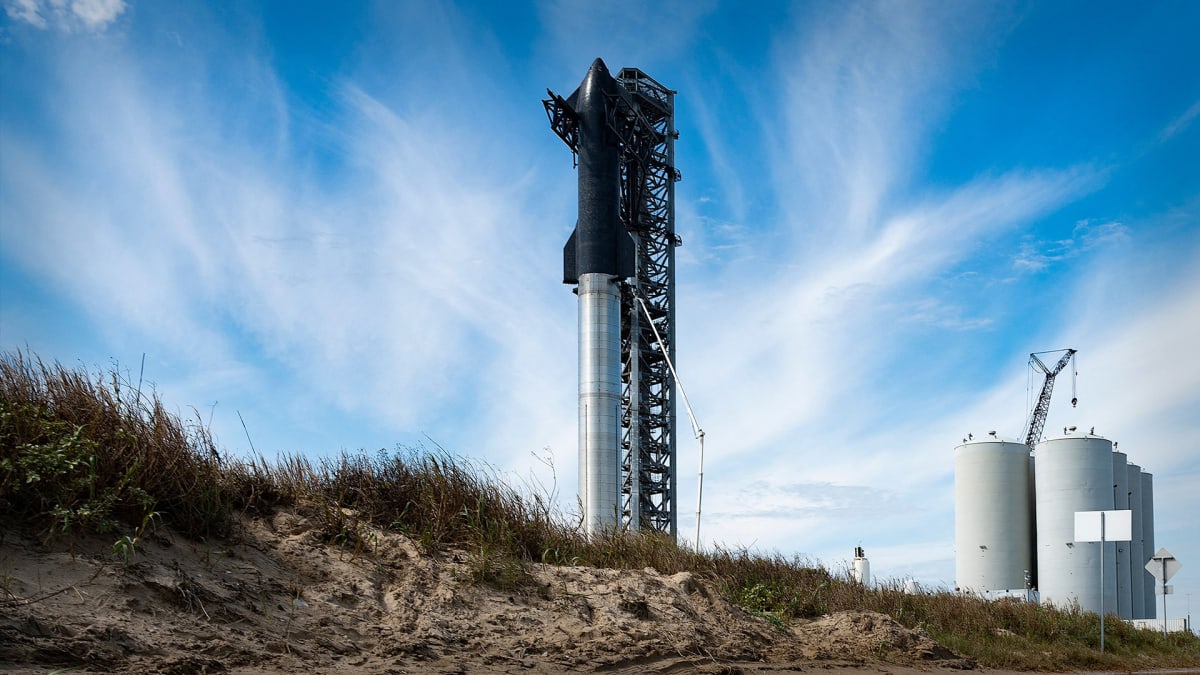
Elon Musk is ready.
The billionaire entrepreneur is poised to find out whether his dream of one day conquering planet Mars is achievable within the timeframe he has set for himself.
He is now ready to tackle the first part of this capital ambition.
Three weeks ago, he indicated that SpaceX, his aerospace company, was almost ready for the maiden flight of Starship, the massive rocket at the center of his quest for the conquest of space.
"SpaceX will be ready to launch Starship in a few weeks," Musk said on March 17. He added that the exact timing of the launch depended on the Federal Aviation Administration (FAA) approving a license.
'Ready for Launch'
Now there is no longer any doubt: the billionaire has just given an update that will delight most space fans. Starship is ready. All it needs is the green light from the FAA.
"Starship is ready for launch 🚀," Musk tweeted on April 8. "Awaiting regulatory approval."
The announcement was met with surprise, enthusiasm and excitement by Twitter users.
"Incredible! What’s your best estimate for when approval will happen?" asked one Twitter user.
"Let’s gooooooooo @FAANews!!!" another user added.
"LFG. Any idea on how long regulators will take…?" asked another Twitter user.
Everything now rests with the FAA.
"The FAA will make a license determination only after the agency is satisfied SpaceX meets all licensing, safety and other regulatory requirements," a spokesperson said in an emailed statement.
The statement added that the federal agency license evaluation "includes reviews on policy, payload, safety, airspace integration, financial responsibility and environmental impacts."
The agency had given Musk's company a hard time testing the spacecraft last summer, citing no fewer than 75 points and corrections to be made to limit the environmental impact of the giant rocket.
By mid-March, Musk did no have doubts that SpaceX would obtain clearance from the air and space regulator, since he had already estimated the timing of the launch.
"Assuming that takes a few weeks, first launch attempt will be near end of third week of April, aka …" the whimsical entrepreneur said at the time.
Starship Orbital Launch
The orbital launch of Starship is supposed to represent a great leap forward for humanity, by offering a machine capable of reaching the moon, then Mars, while carrying tons of cargo.
Starship, a next-generation rocket, refers to the space-transport vehicle and the upper stage of the launcher. The main stage -- that is, the booster needed to launch the Starship -- is called "Super Heavy."
This future reusable transport system will carry both cargo and people. It is designed to quickly replace the entire current range of SpaceX launchers and separate freight and manned transport systems. These are the Falcon Heavy and the Falcon 9, used for launching satellites, refueling the International Space Station, and rotating crews.
The Starship, which will become the most powerful rocket ever launched when it lifts off, will one day carry astronauts and supplies to the moon and possibly Mars.
SpaceX has tested the second-stage Starship spacecraft, but only on high-altitude flights rather than in orbit. The Super Heavy, on the other hand, has yet to fly.
The maiden launch promises to be a spectacular sight as the Super Heavy's 33 Raptor engines propel the vehicle skyward. Just three minutes into the test flight, the Starship will separate from the Super Heavy, on a mission that is expected to last about 90 minutes.
Successful testing of the spacecraft will pave the way for NASA to use a modified version of the Starship spacecraft to land the first woman and first person of color on the lunar surface, a mission that will take place no sooner than 2025.
The vehicle could also be deployed to ferry supplies to the moon to help build NASA's proposed moon base. NASA is currently targeting the late 2030s for the first astronaut mission to Mars.







